reviews:
Statement by Alessandro Martinelli, curator of exhibition ‘佈局 - Forms of Arrangement’ at IT Park gallery, Taipei
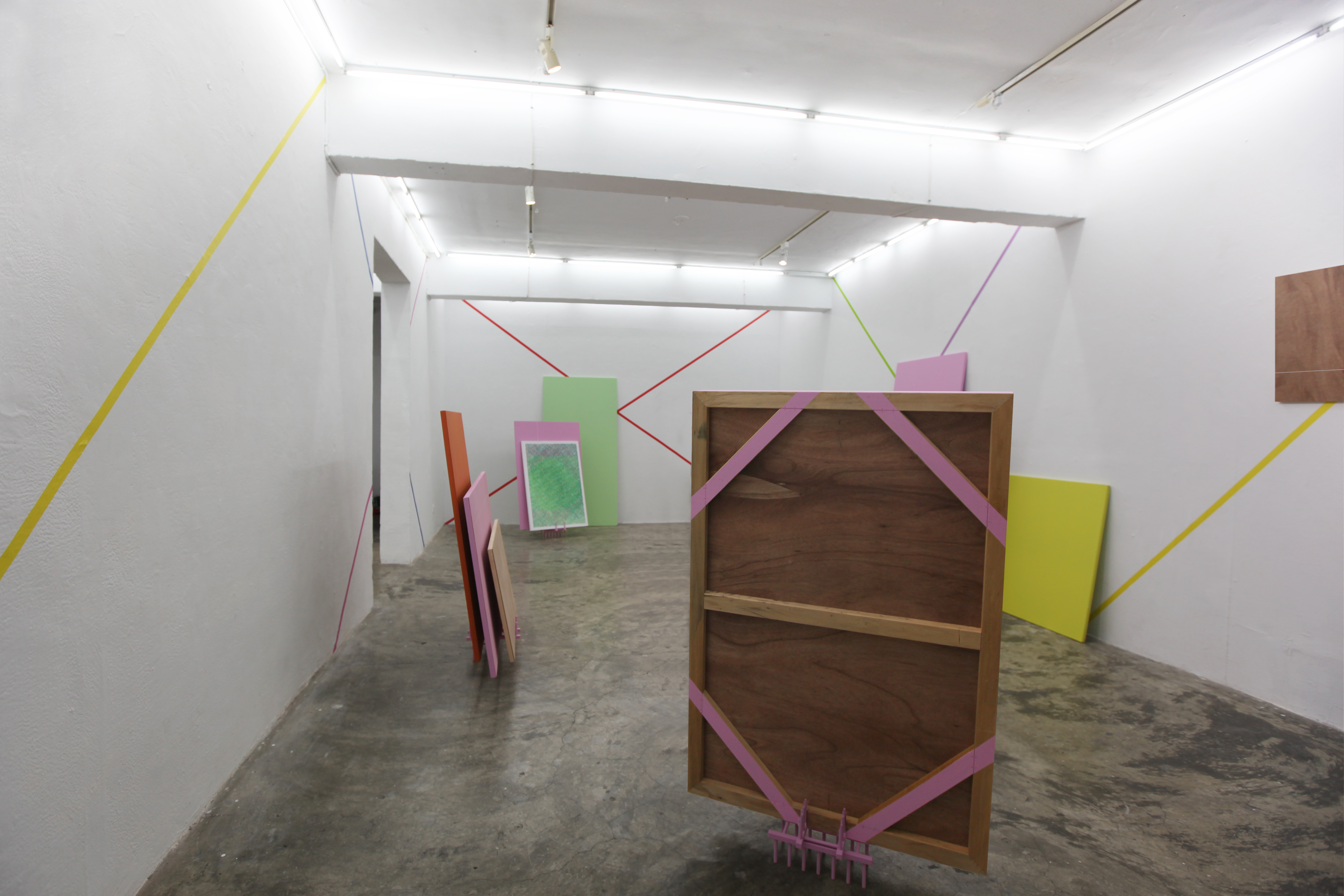
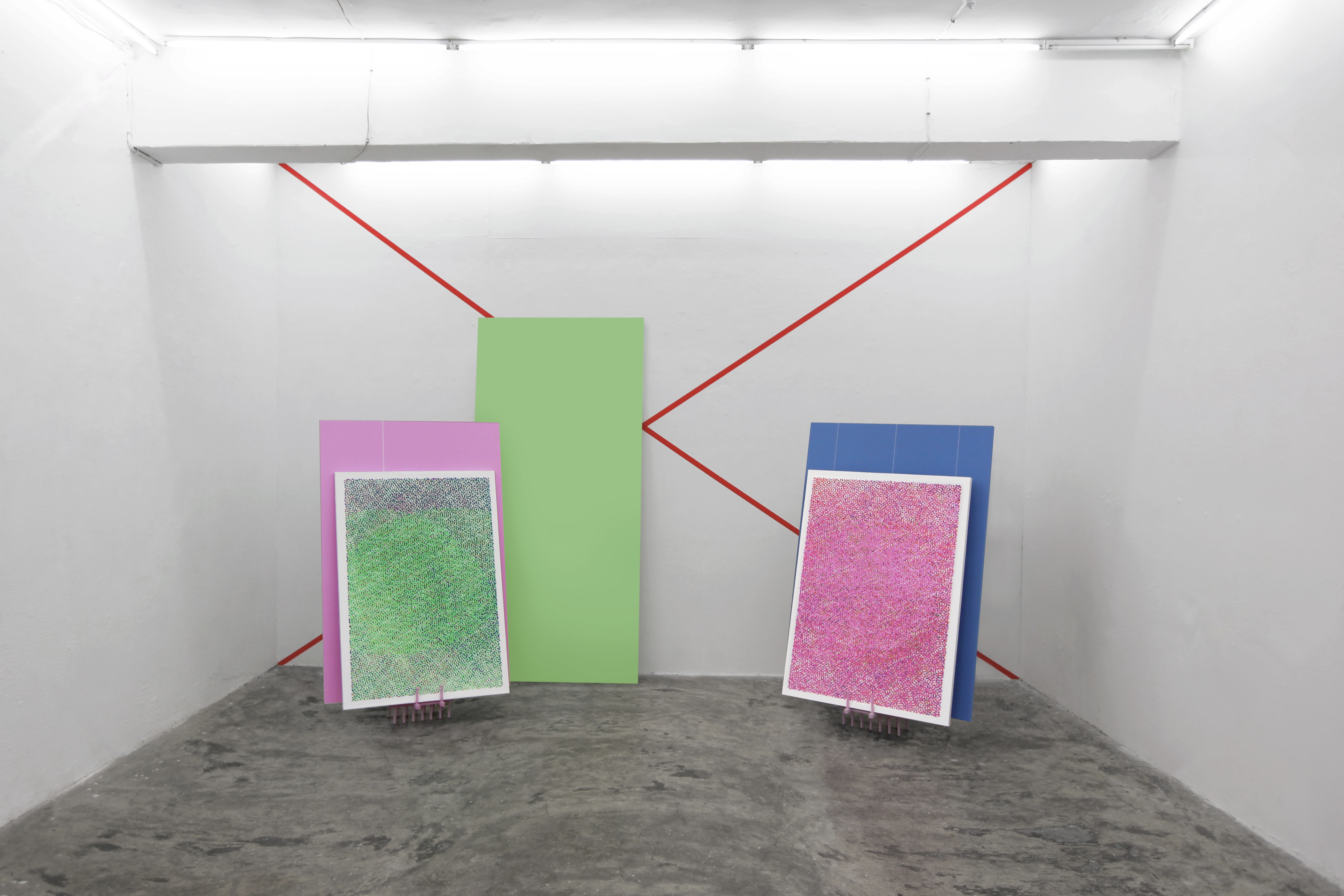
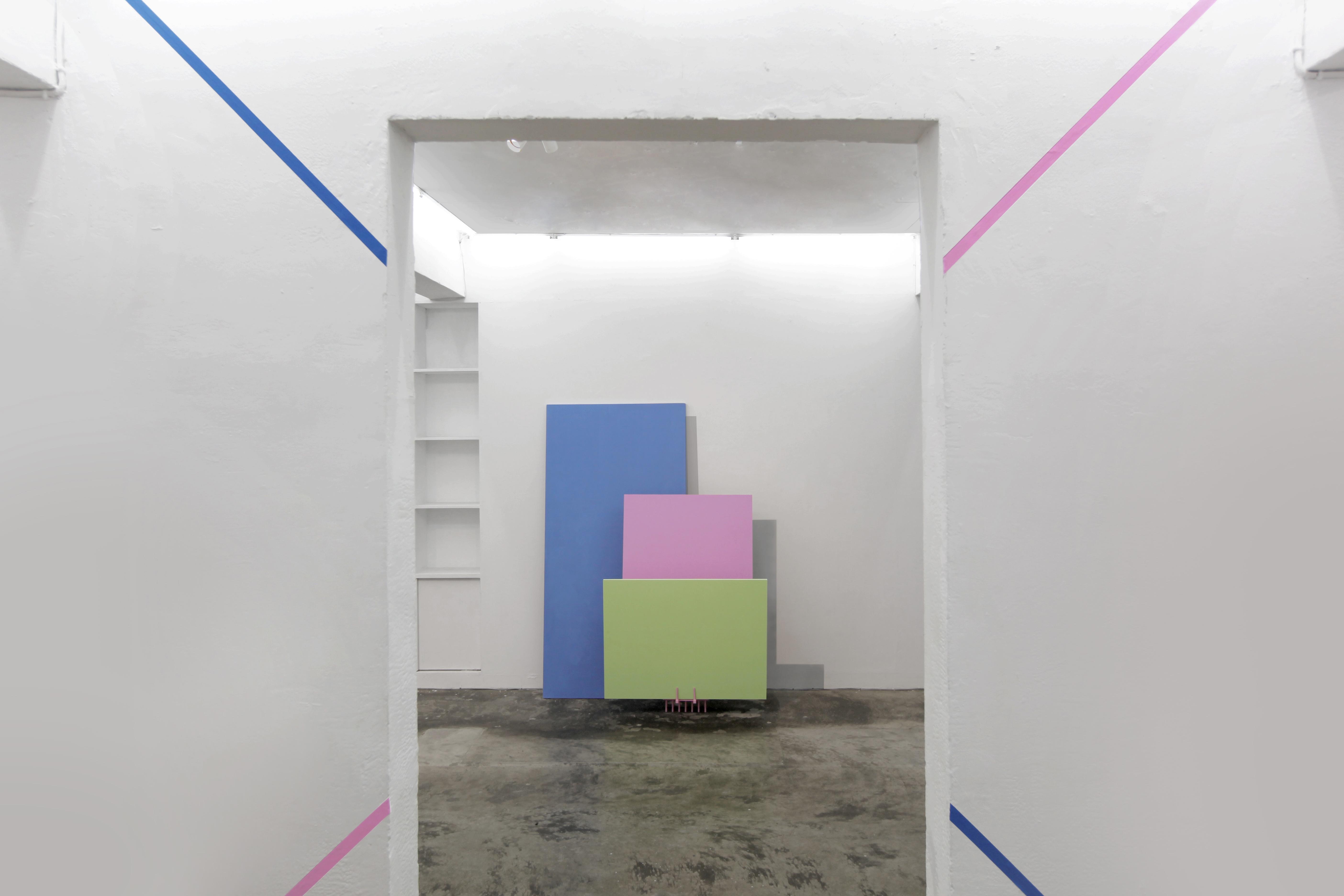
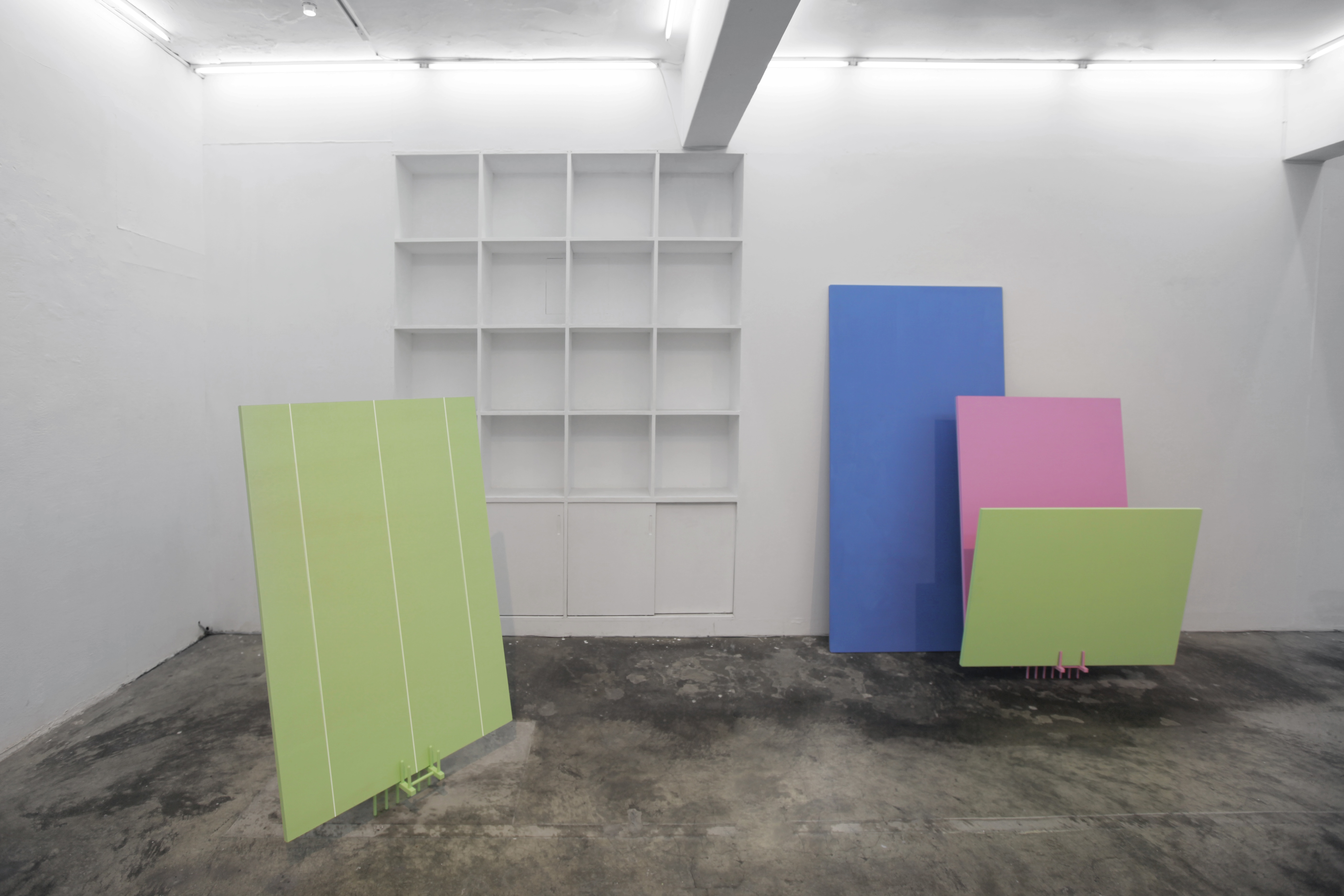


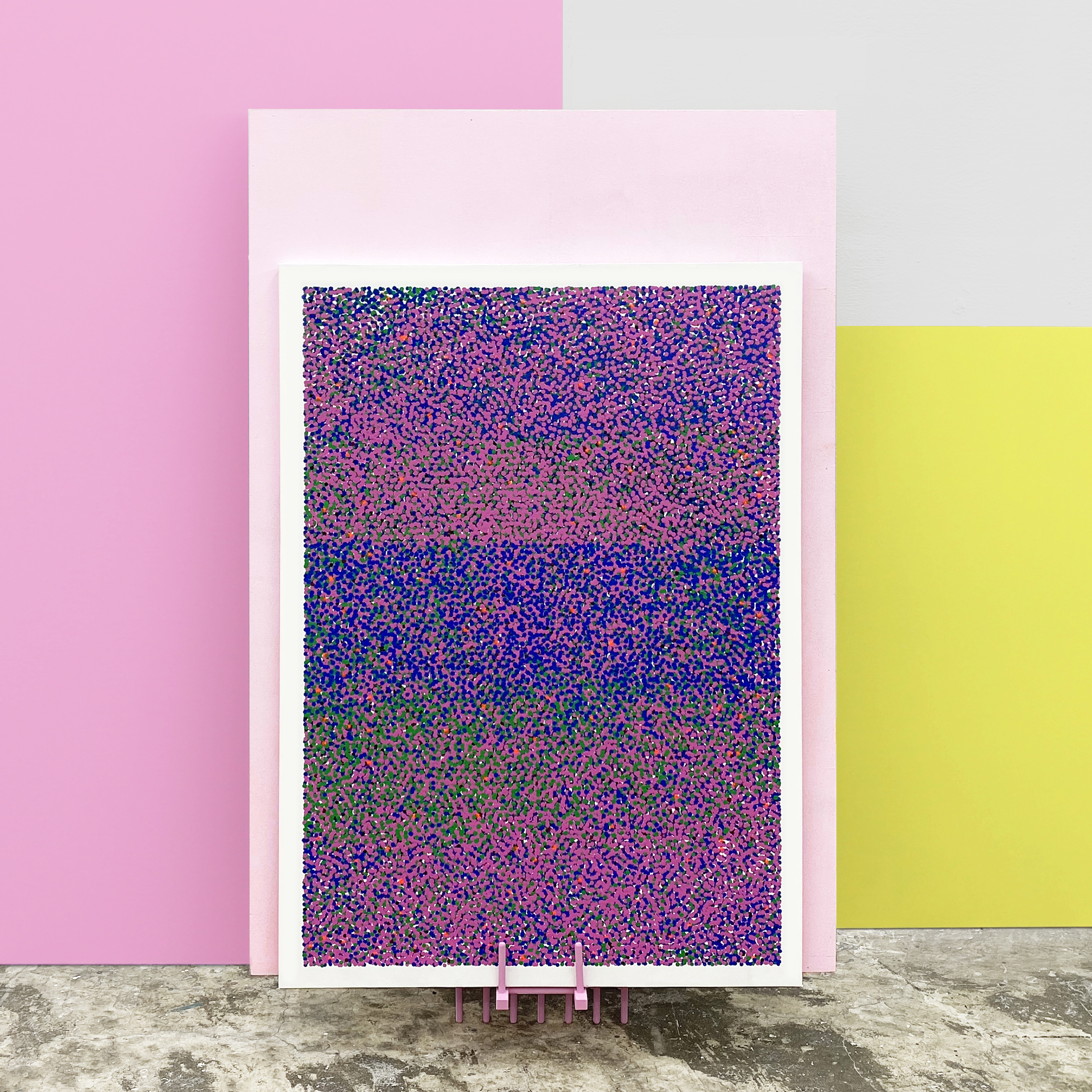


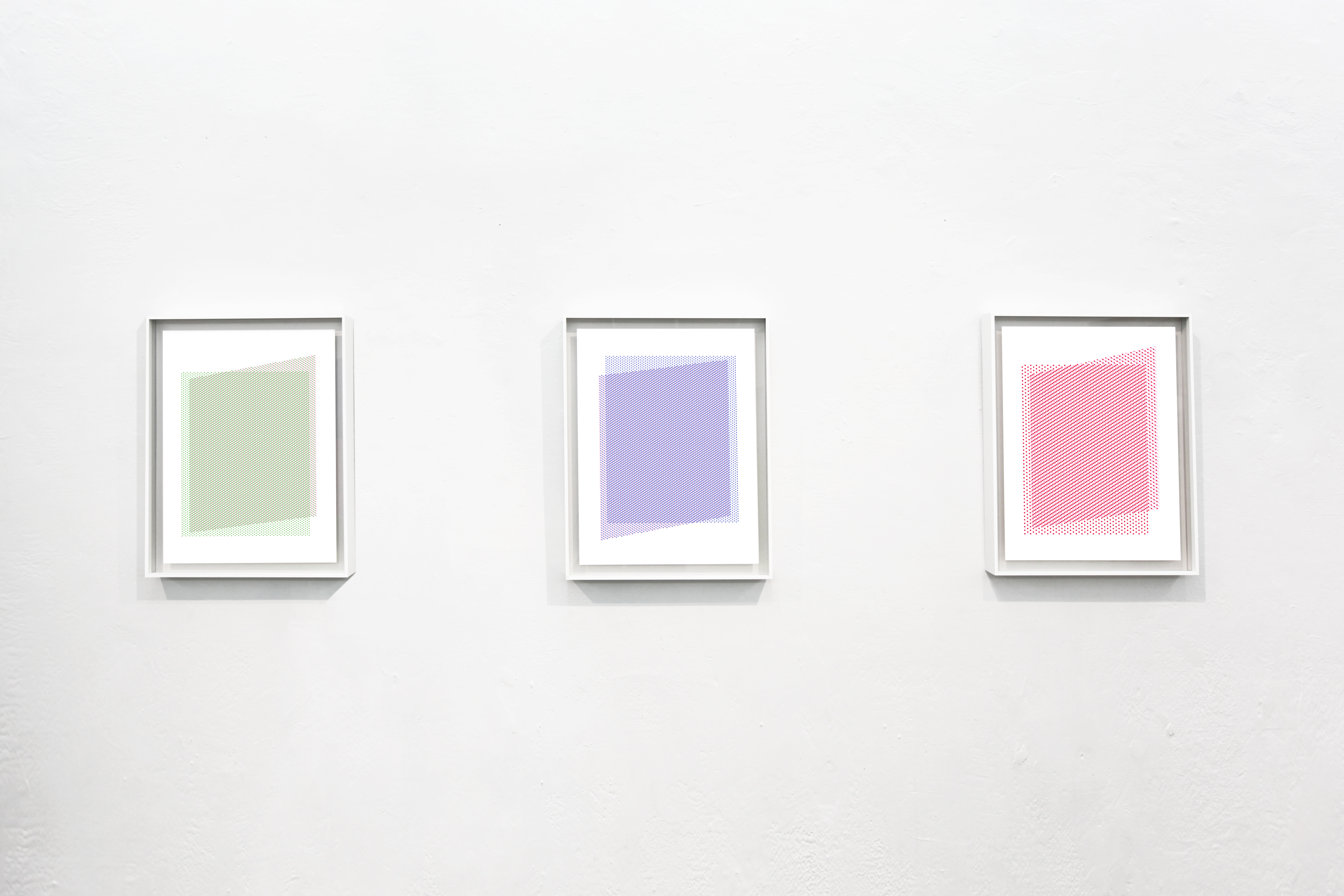
‘Forms of Arrangement’ is a solo exhibition of Maria Lezhnina at the renowned IT Park gallery in Taipei, an art space that has scouted and showcased emerging artist with a strong take on contemporary culture for a few decades.
Due to this unique framework, the artist not only created a series of works, but also the exhibition system and the overall installation of the exhibition as a total piece of art. Somehow, the focus of the artist becomes that of art in space, or environmental art, although this definition does not straightforwardly depict the intention to join visual and spatial experiences in the art on display.
The title of the exhibition is 佈局, translated in English with ‘Forms of Arrangement’. Although the two titles are not the direct translation of each other, buju means layout, and it is often used to describe chess game and the active interplay at stake within. Somehow, the pieces of exhibition resemble figures, the like of chess pieces. They are independent but also there is a set relationship that holds all of them together in active form, animating the free wandering of the viewer in the exhibition space.
This way, the aesthetic experience delivered by the exhibition is both close and far from that of spiritual meditation that is often referenced in the Asian art. Indeed, through the subtle connection of art pieces and totemic symbols - that is delivered by the aesthetic quality of both the art pieces and totems, so to say - the exhibition itself is an attempt to integrate animism and the aesthetics of living space to explore the unique and paradoxically contradictory life of modern Asia.
Not only but also, the main artworks of the exhibition are dedicated to different roads of Taipei city. Each portrays an abstract impression of a street, and -the like of the streets - they come together to form a city, a chessboard of everyday life.
This way, the artist advocates for a more aesthetic awareness of urban space while she recollects those experience she had in place while living in Taipei.
Someone would call it an elegy to the city, some other would say it is a garden - in the ancestral sense of a miniature of the natural world- or a totemic field, but finally what matters is that the exhibition delivers a memorable atmosphere of colors and spaces where we can immerse ourselves.
The smaller artworks of the exhibition - I.e, framed boards - try to recollect the spatial experience of the major ones on the flat surface, challenging the more conventional format of the framed painting.
Review of Art book ‘Marble is a state of Matter’ by Pahparn Sirima Chaipreechawit, ARTTELLER, Bangkok, Thailand
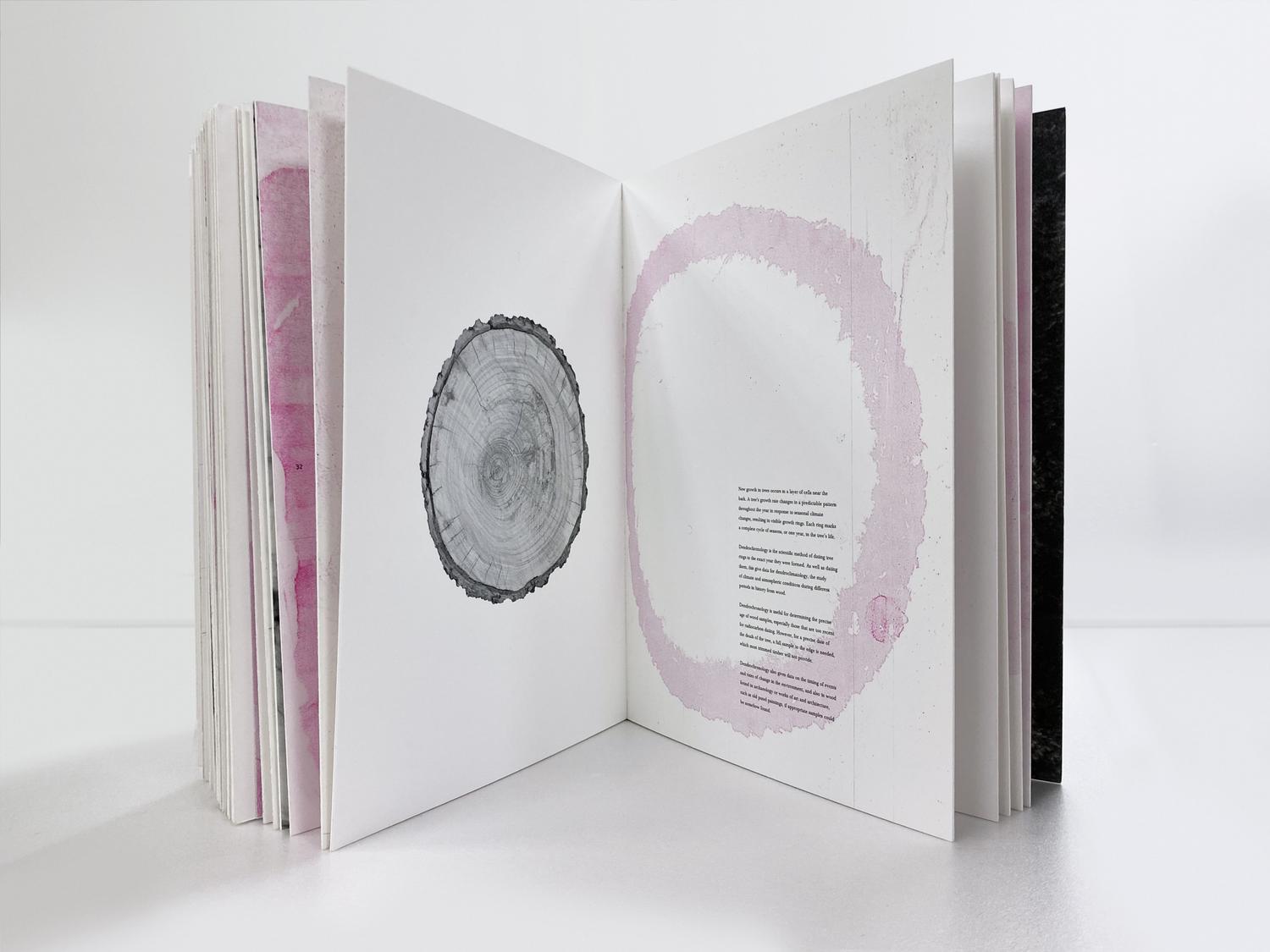

ARTTELLER: Hi, what’s this project about?
สวัสดีค่ะ ช่วยเล่าเกี่ยวกับโปรเจ็คให้ฟังหน่อยได้ไหมคะ
Maria: This project started from a commission to study and realize the key visual for Taiwan Culture Expo 2019. Main topic was Culture on the Move. For that occasion I tried water drawing in order to express movement.
Spending time with the water and trying to find a pattern, I remembered Leonardo Da Vinci studies of water movement, the very beginning of scientific studies on natural and man made and natural events, that later brought to our vision things such as the atoms, volcanoes, space asteroids, all of different scales. Actually, it's fascinating how things connect on different scales of reality. I started to think somehow to Eames' Power of Ten movie and its narrative brought me to the idea of a book, combining my photograms and photographs with other archive images.
โปรเจ็คนี้เริ่มจากงานมอบหมายจากองค์กรศิลปะไต้หวันที่ฉันต้องทำงานเกี่ยวกับน้ำ ทำให้ฉันสนใจ เรื่องน้ำ หยดน้ำ หรือธรรมชาติของน้ำมากขึ้นตั้งแต่นั้น ฉันเริ่มจากทำโฟโต้แกรม(photogram) ของ หยดน้ำและคลื่นน้ำมันน่าประหลาดใจมากสำหรับฉัน ฉันเลยเริ่มหา reference จากวิทยาศาสตร์ต่างๆ ว่าหยดน้ำเกี่ยวข้องกับโลกอย่างไร ฉันเชื่อมโยงหยดน้ำเข้ากับรูปแบบอื่นๆในธรรมชาติ ในหลายๆมิติ ในหลายๆสเกล เช่น ภาพหยดน้ำบางภาพเหมือนระเบิดปรมาณู หรือบางภาพเหมือนดาวเคราะห์ใน จักรวาล หนังสือเล่มนี้จึงเล่าเรื่องผ่านการการผสมผสานระหว่างโฟโต้แกรมสีชมพูของฉันกับภาพจาก ประวัติศาสตร์และวิทยาศาสตร์
ARTTELLER: Why your photograms are always pink?
ทำไมต้องสีชมพูคะ
Maria: All colors have different behavior and relationship to the image, our eyes, and the media. Somehow, the pink color had thecapacity to capture better the water surface and its details.
ฉันลองหลายสี แต่สีอื่นเห็นหยดน้ำไม่ชัดเจนเท่าสีชมพู บางส่วนที่เข้มกว่าส่วนอื่น หรือพวกรายละเอียด ก็เห็นได้มากกว่า
ARTELLER: Are you interested in science at the first place?
คุณสนใจในวิทยาศาสตร์อยู่แล้วรึเปล่า
Maria: Since I was a child I had a curiosity about nature and science. Then, approaching the visual art I was dragged to think about the visual experience and its scientific determinants. So, for example, my first book was about landscape from the perspective of climate and the impact of variables such as temperature and humidity over the aesthetics. That said, I also have an architectural background, so it is probably natural for me to think about the elements of the environment rather than simple images. Somehow all these interests of mine mixed together in this last book.
ฉันมีความสนใจในการเปลี่ยนแปลงสภาพในธรรมชาติ อวกาศ พื้นที่ และอากาศ หนังสือเล่มที่แล้ว ของฉันพูดเรื่องสภาพอากาศ ซึ่งฉันก็ยังสนใจเรื่องวิทยาศาสตร์และธรรมชาติแบบนั้นอยู่ สมัยก่อนฉัน เรียนและทำงานเกี่ยวกับสถาปัตยกรรม ฉันเลยสนใจในความเป็นเมืองหรือตึกต่างๆด้วย และการทำ โปรเจ็คส่วนตัวเลยเหมือนรวมๆทุกอย่างที่ฉันชอบเข้าด้วยกัน
ARTTELLER: Why this project name’s ‘molecules - marble is a state of matter’?
ทำไมโปรเจ็คถึงชื่อว่า ‘molecules - marble is a state of matter’
Maria: Marbling is a painting technic that use water. It is in itself interesting that water was used to mimic those movements of earth producing the stones and their patterns. This thinking belongs to the book. Some photogram look like a bomb, some like dark matter, etc... All these and the images themselves connect at some point. Marcel Duchamp made an art piece to talk about connection among different planes of reality, the likes of art, science, and religion. All are impossible to divide. Some patterns are done by human, some by nature. So, by looking at the water surface, you can find things that speak a lot about the universe.
โปรเจ็คนี้ชื่อว่า molecules - marble is a state of matter เพราะในหลายครั้งภาพโฟโต้แกรมของ หยดน้ำหรือคลื่นน้ำดูคล้ายหินอ่อนเลยมีคำว่า ‘marble-หินอ่อน’อยู่ในชื่อ นอกจากนั้น ภาพน้ำอันนั้น ยังดูเหมือน dark matter มากๆด้วย มันเลยเป็น marble is a state of matter
บางภาพของหยดน้ำดูคล้ายภาพ dark matter ในอวกาศมาก หรือบางภาพที่เหมือนระเบิด หรือภาพ ที่ดูเหมือนหลุมภูเขาไฟ ทุกอย่างที่ว่าประกอบขึ้นจากโมเลกุล มันเชื่อมโยงซึ่งกันและกันไม่ว่าในรูป แบบใดรูปแบบหนึ่ง เหมือนที่ Marcel Duchamp เคยบอกไว้ว่าทุกอย่างในโลกคือเรื่องเดียวกัน ทั้ง ศิลปะ วิทยาศาสตร์ และศาสนาทุกอย่างเชื่อมโยงกันแบบแยกไม่ออก ความเชื่อมโยงแบบนี้ไม่เพียง ถูกสร้างโดยมนุษย์ แต่มันมีในธรรมชาติด้วยเช่นกัน เพราะฉะนั้น เพียงมองหยดน้ำ เราก็จะเชื่อมโยง เข้ากับสิ่งอื่นๆในโลกได้อีกมากมาย
Pahparn: An Experimental Research Project about Water Drop is a Photogram technique comparing the shape of Water drop - Water Wave and what relations it has with the planet.
Beyond the beauty of work, the artist has shown the process of the research in the form of Photogram layering with different Archives Images together, creating something unique that reflecting on the subject. She has developed this into a folded Visual Art Book that represents the idea of a water stream.
Maria is an Artist that doesn't limit herself or her storytelling by just photography. Her Choice in using Photogram supports the topic that she has chosen. By focusing on a water drop, she has found a way of relating the changes in nature, space, the outer atmosphere and the explosion of the atom bomb, giving insight to the viewer in how things are connected. Posing an idea that “the Form of the Universe” and all living things can be related through a drop of water.
I think this piece can be further developed, therefore I would like to show my support in her work by nominating her for the prize and hope that she carries on with this project."
Review of ‘Untitled Climates’ by Kana Kawanishi curator and director at Kana Kawanishi Gallery, for Unknown Asia Photo Exhibition, Osaka, Japan

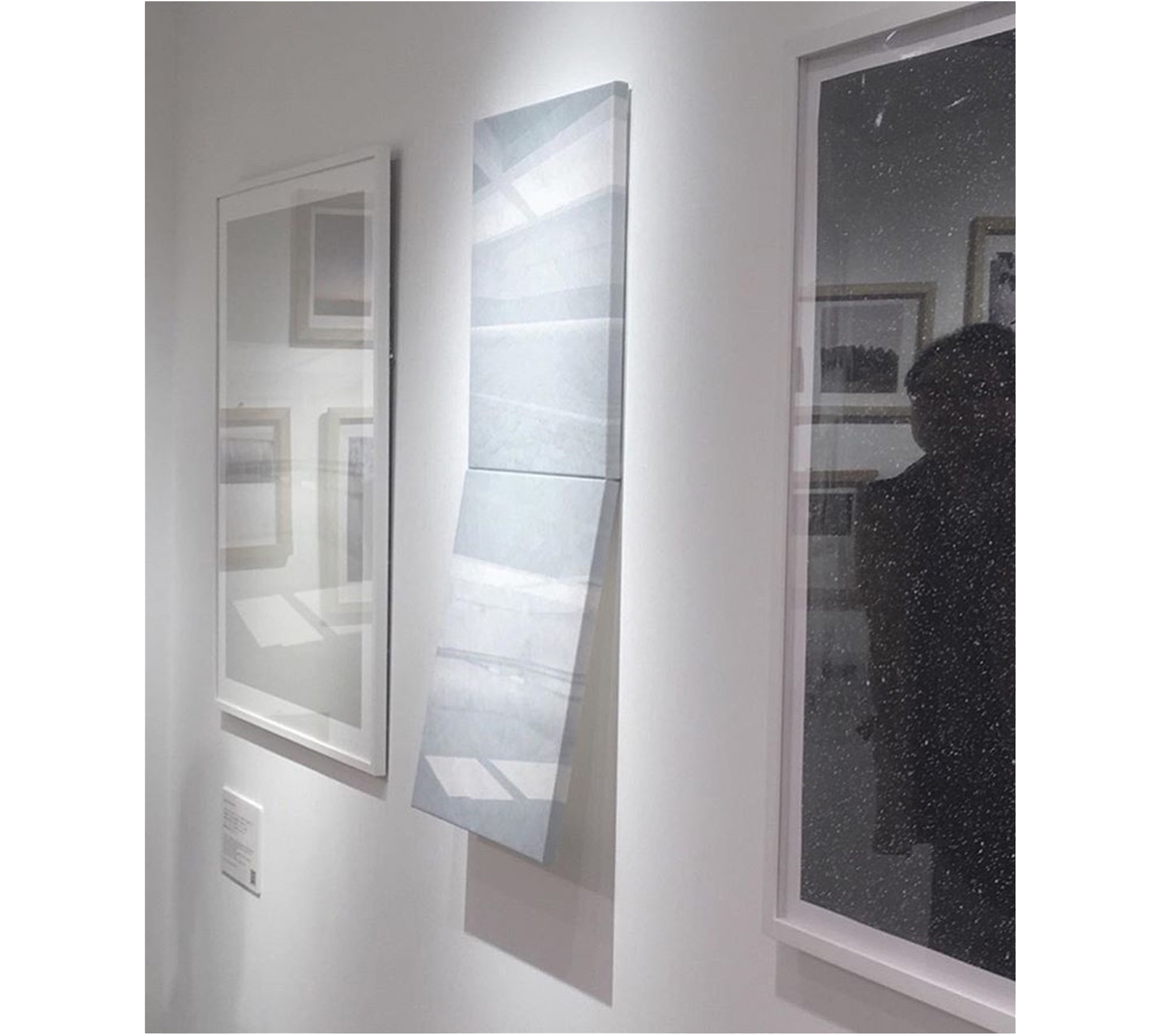


Kana Kawanishi: Maria Lezhnina, from Russia and based in Taiwan, exhibits her substantial and sophisticated works capturing "climate" in a visual language that presents the origin of landscapes, with a solid conceptual foundation, rooting in her architectural background. Maria focus is the climate and how this defines the landscape. She is a unique photographer that creates new landscape photographs capturing the changes of climate.
Moreover, she catches atmosphere of the exhibition site by choosing paper materialities that exhibit the photograph in the context. This way, she can create 3 dimensional installations flexibly adapting to the space. Everything she chooses has a logic. Due to her architecture background, the quality of her presentation and works are remarkably high.
"UNKNOWN ASIA" is a fair featuring artists themselves- without restrictions in nationalities nor ages, artists apply, install, and stand in booths themselves on their own responsibility. The most unique characteristic of this fair must be how the organizers structure "actual good things" to happen to the participating artists in various ways. For example, a profuse number of professions from the art world, design industry, advertising industry, mass media, retail industries and many others are called from the organizer as jurors and reviewers, and each juror/reviewer must select one artist under one's name. Criteria of selections could be based on personal decisions, but they must select one "best" artist under their public name and philosophy, literally making each juror/reviewer prize a significant monumental reward. In this exhibition, six photographers from four regions who participated in the energetic Unknown Asia 2017 will be introduced. Evelyn Pritt, from Indonesia, maximizes the power of photography in how the medium can reflect and transcribe the world, inviting all viewers to find the depth of the universe in ordinary landscapes scattering in the nature. Hilarius Jason Pratana, from Indonesia, utilizes his brilliant gift as a portrait photographer and showcases his energetic avant-garde presentation, although his works may range from reticent narrative daily photos to vivid cutting-edge fashion shoots. Maria Lezhnina, from Russia and based in Taiwan, exhibits her substantial and sophisticated works capturing "climate" in a visual language to present the origin of landscapes, with a solid conceptual context braced from her architectural background (Pam) Virada Banjurtrungkajorn, from Thai, composes her original and newly created visions by the method of analog collage, cutting and positioning the films neatly compiled in alphabetic order based on what each image is capturing and describing. Ray Tsuyumitsu, from Japan, discloses her fetish, colorful, playful and humorous self-portrait series where she bends from her hip to hide her upper body, creating a unique view as though just her legs are floating in landscapes. Lastly, Yen Tzu-Sung, from Taiwan, visualizes a photographic world consisted of his unique conception of capturing architectural views in his own minimal abstract ways. The diverse expressions of the six artists are each based on different backgrounds and inspirations, and exemplify an exquisite quality of aesthetics. Moreover, what found is a profound potentiality, which makes this exhibition an epitome of Unknown Asia itself.

Article ‘Urban Atmosphere 都市大氣’ in Photography is Art Magazine, text Gloria Furness, Hong Kong





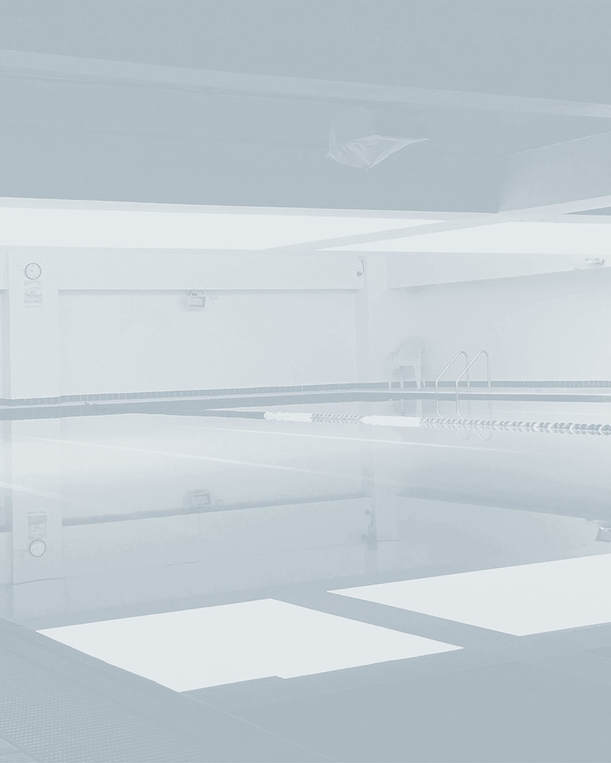
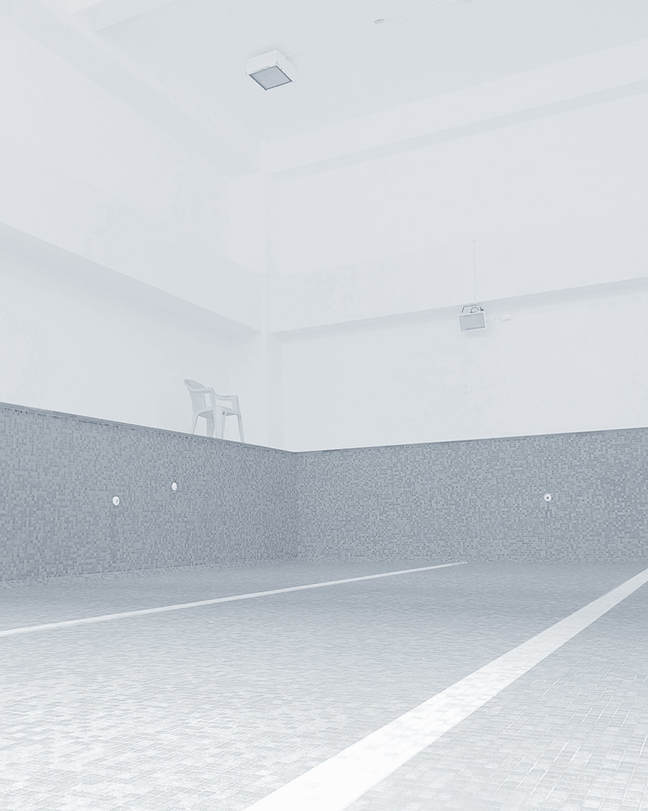

Taiwan-based artist Maria Lezhnina was born in Russia and is becoming well-known for her photographs of Taipei’s man-made landscapes. Her knowledge of architecture and design, and her keen eye for simple compositions and dazzling details, help her transform ordinary urban spaces into static, refreshing abstract worlds: for example, she will use precise composition to transform a dry swimming pool into a strange space where light and water intersect, or a hot asphalt road is transformed into a set of colorful lines that attract people's attention. In the ever-changing urban environment driven by modernization, she seems to have solidified the indescribable existence of light, humidity and humanistic atmosphere in the photos. "Climate determines the landscape... In the era of globalization, it has become a factor that dominates the landscape." Lezhnina said. As natural landscapes are gradually disappearing due to climate change, humans are using technology to recreate the climate, allowing artificial landscapes such as greenhouses, parks, and public spaces to replace natural scenery. Lezhnina's work "Artificial Climate" takes this theme as a record of the annual refilling process of a public swimming pool. She photographs swimming pools as they slowly transition from a dry, dull surface to a moist, refracted surface. The lines at the bottom of the pool are reflected and projected onto the ceiling, turning into a pale monochromatic, abstract and fragmented images under long exposure. Although the space presented in the work is silent and lifeless, human activities persist in this artificial atmosphere.
"Resistance to Modernity" is Maria's recent creation centered on urban asphalt roads, which as always reflects human beings' manipulation of public spaces. In Taipei, street signs are often given a new coat of light gray paint, barely covering signs that are no longer relevant. The new and old logos overlapped and became a mess of colors and lines, adding a bit of critical meaning through Maria's lens. Maria said: "A roadblock is supposed to be a practical object, but in some cases, it loses its original meaning and becomes of great artistic value." This phenomenon subverts the traditional concept that architecture is relatively permanent and shows how Taipei has evolved over time, developing urban space dynamics and public participation. Lezhnina believes that the contrast between these road signs and the religious activities on the road seems to be a product of pre-modernization, resisting the laws of global urbanization. The above two series focus on climate and human intervention, showing a new perspective on fragmented urban landscapes. Lezhnina's abstract expression is critical, reminding us that even the solid and clean lines in architectural photography are illusions, while also revealing that the city's climate and landscape are changing all the time due to human intervention.
現居於台灣的攝影師 Maria Lezhnina 出生於俄羅斯,因拍攝台北市的人工地貌而漸為人知。
她對建築和設計的了解,以及對簡潔構圖和炫目細節的敏銳目光,助她把平凡的都市空間變成靜止、清新的抽象世界:例如她會透過精準的構圖,把乾涸的泳池變成一個光水交集的陌生空間,或把灼熱的柏油道路轉化成一組使人凝神貫注的彩色線條。在受現代化推動而不斷變幻的城市環境之中,她彷彿把光、濕度和人文氣息不可言狀的存在一一凝固在照片裹。
「氣候決定地貌⋯⋯在全球化時代,(它)更成為主宰地貌的因素。」萊什妮娜如是說。隨着自然地貌因氣候變化而逐漸消失,人類以科技重現氣候,使得溫室、公園和公共空間等人工地貌取代自然風光。萊什妮娜的作品——《人工氣候》正以此為主題,記錄了一個公共泳池一年一度重新注水的過程。
她拍攝泳池從乾涸、黯然的平面,緩緩過渡至濕潤、因折射而扭曲的水面。池底的線條被反射投影到天花上,在長曝下變成蒼白的單色調,抽象零碎的影像。作品呈現的空間雖寂靜無聲、了無生氣,但人類的活動卻在這人工的氛圍中長存。
《對現代的抵抗》是Maria近期圍繞都市柏油路面的創作,一如既往反映人類對公共空間的操控。在台北,街道上的路標常被塗上一層新的淺灰色油漆,勉強遮蓋不再適用的標誌。新、舊標誌交疊在一起,成為一堆雜亂的色彩與線條,在Maria的鏡頭下,添了幾分批判的意味。Maria說:「路標本來應該是實用的物件,但在某些情況下,它會失去原意,變得很有藝術價值。」
這種現象顛覆了傳統認為建築相對恆久不變的觀念,展現台北在發展都市空間上的動態及公眾參與度。萊什妮娜認為這些路標跟路面上的宗教活動的對比,看來像是現代化前的產物,抵抗着全球城市化的定律。
上述兩個系列聚焦於氣候和人為的干預,展現觀看零碎都市地貌的新視角。萊什妮娜的抽象表達手法充滿批判性,提醒我們即使是建築攝影中堅實利落的線條也是幻影,同時亦揭示在人類的介入下,城市的氣候地貌無時無刻都在改變。
#works #workshops #prints #contact #instagram